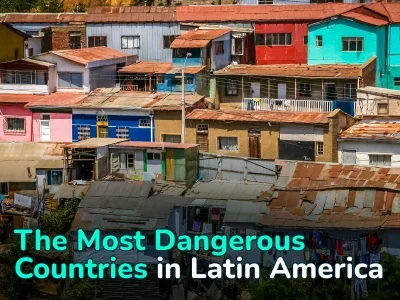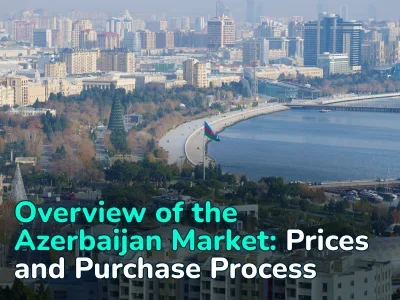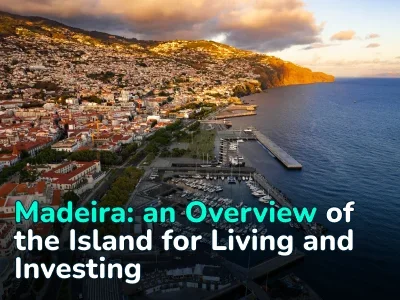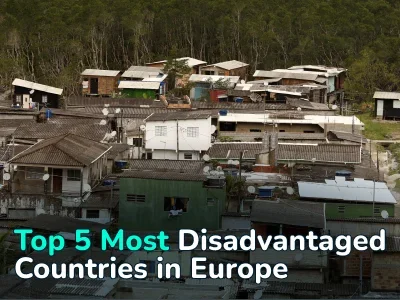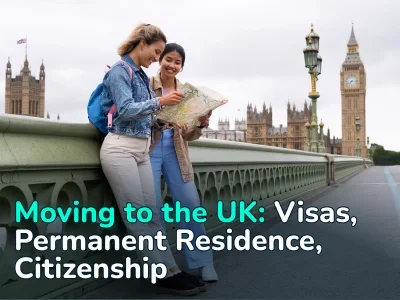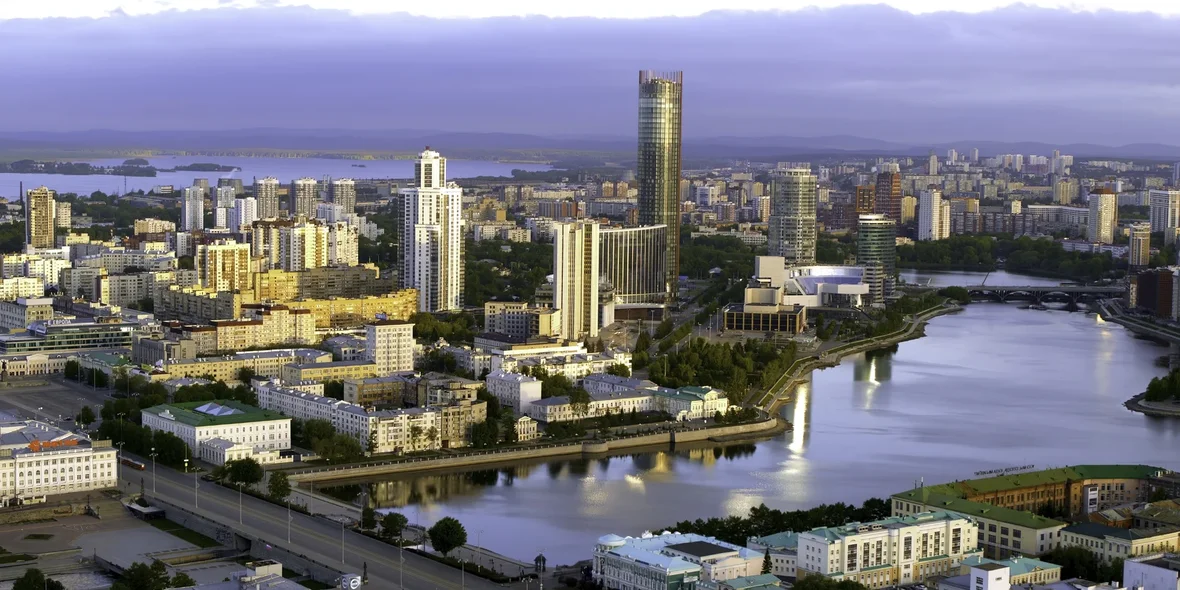
From the Arctic Circle to the Subtropics: How People Live in 10 Different Cities in Russia
Russia is the largest country in the world, stretching across vast lands where the waters of three oceans — the Pacific, Arctic, and Atlantic — meet with a dozen seas. Almost all climate zones can be found here: from the subtropical heat of the Krasnodar region to the subarctic chill of Magadan. This diversity of nature inevitably leaves its mark on people’s lives.
We decided to take a closer look at ten cities, each representing a different facet of life in Russia, and examine how living conditions differ between them. And of course, we’ll consider how attractive they are — including from a real estate investment perspective.
Magadan, Magadan Region
We begin with one of the most remote major cities in Russia. Magadan is located on the shore of the Sea of Okhotsk, part of the Pacific Ocean, along Nagaev Bay. Part of the city stretches up into the hills, while the rest lies in a coastal lowland. The Magadan Region is situated in the Far East — more than 7000 kilometers from Moscow, with the nearest large city, Khabarovsk, about 1500 kilometers away.
Magadan’s climate is subarctic, although its proximity to the sea softens it slightly. Winter lasts more than half the year, with temperatures sometimes dropping to — 30 °C or lower. Summers are short, with average temperatures ranging from 15 to 20 °C. Overall, the region receives less daylight than the European part of Russia, though it does not experience polar day or night cycles.
Recent climate changes have had a significant impact on the region, as Arctic and near-Arctic zones are warming faster than others. Average temperatures have risen by 2–3 °C, and winters have become milder.
What Drives Magadan’s Economy?
Magadan is industrially well-developed. The region is rich in natural resources, and the sea serves not only as a source of food but also as a base for the fish processing industry. The tourism sector remains underdeveloped, although the region has much to offer. Untouched taiga forests, hills, mountain rivers, tundra, northern lakes, sea excursions, whale watching, seabirds, cliffs, and bays all form the foundation for ecotourism.
What is Life Like in Magadan?
Due to its extreme climate, salaries in Magadan include regional bonuses known as “northern allowances.” As a result, the average wage is relatively high — around 100,000 to 120,000 rubles per month — but so is the cost of living. Goods such as food, clothing, and electronics must be shipped in from other parts of the country, driving up prices. The city’s infrastructure is modest: a couple of shopping malls, a cinema, some cafés — entertainment options are fairly limited.
The housing market is small, constrained by the local terrain, although new buildings are still being constructed. The average price per square meter ranges from 70,000 to 90,000 rubles. Apartments in the city center are the most popular, thanks to their proximity to stores and schools. Buildings are designed to withstand the sea winds and retain heat through proper insulation and heating systems.
Overall, the harsh climate and limited leisure options can take a toll on residents. However, many appreciate the absence of big-city hustle, the calm and unhurried pace of life, the lack of traffic jams, and closeness to nature. Ongoing global warming may make the city more attractive to both tourists and investors in the future.
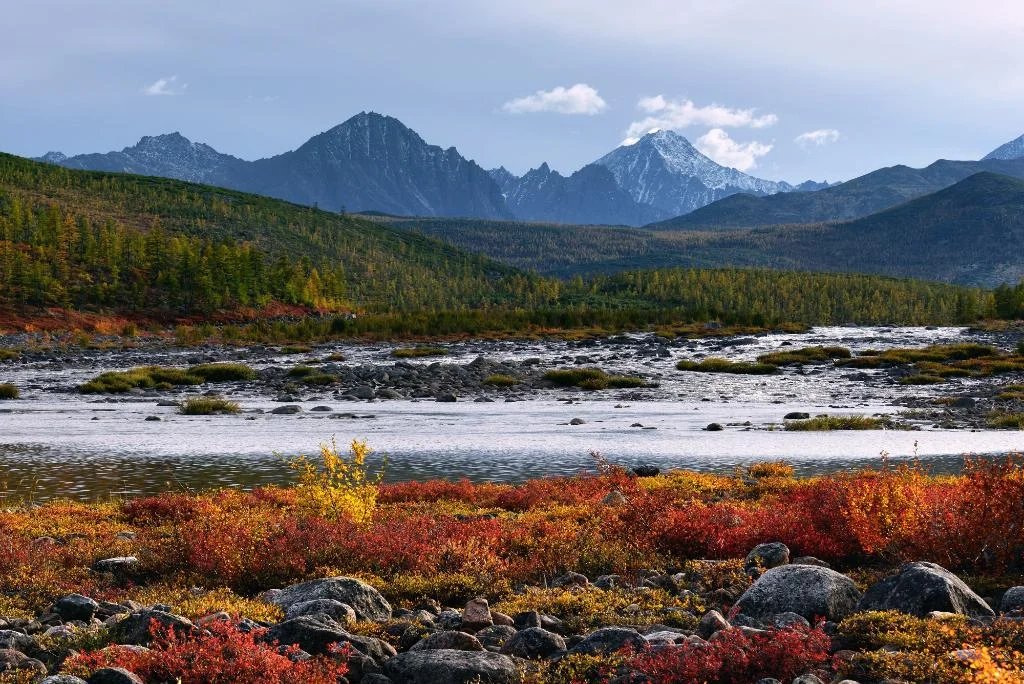
Source of photo: www.kolyma.ru
Krasnodar, Krasnodar Region
For contrast, next on our list is Krasnodar — one of Russia’s warmest and fastest-growing cities. It lies on the plains between the Black and Azov Seas, just steps away from the Kuban River. The city is surrounded by farmland and orchards, and the region is known as the breadbasket of Russia. Although Moscow is still about 1500 kilometers away, the Black Sea resort towns are just a couple of hours’ drive.
Krasnodar’s southern climate borders on subtropical, with hot summers reaching up to +35 °C and high humidity. Winters are mild, with temperatures rarely dipping below zero. Snow, if it falls, quickly turns into slush — a headache for residents of the city’s flood-prone lowlands.
What Drives Krasnodar’s Economy?
The region thrives due to its strong agricultural sector, which accounts for about 10% of all agricultural output in Russia. This supports a robust food processing industry within the city. The construction industry is also a key contributor to the city’s and region’s prosperity. Krasnodar ranks first in Russia for new housing construction.
Tourism is well developed thanks to the city’s proximity to the Caucasus Mountains, though it lags behind coastal cities in terms of visitor numbers.
What is Life Like in Krasnodar?
The average salary ranges from 70,000 to 90,000 rubles. Combined with relatively low food prices, this boosts residents’ effective income. However, there are downsides — traffic jams and extreme heat are two major complaints. The pace of life here is similar to that of major cities.
Housing is a more significant challenge for quality of life. The average price per square meter is between 140,000 and 190,000 rubles in new developments and slightly lower on the secondary market. Despite the high prices, demand remains strong, with many people from harsher climate regions relocating to the city for permanent residence.
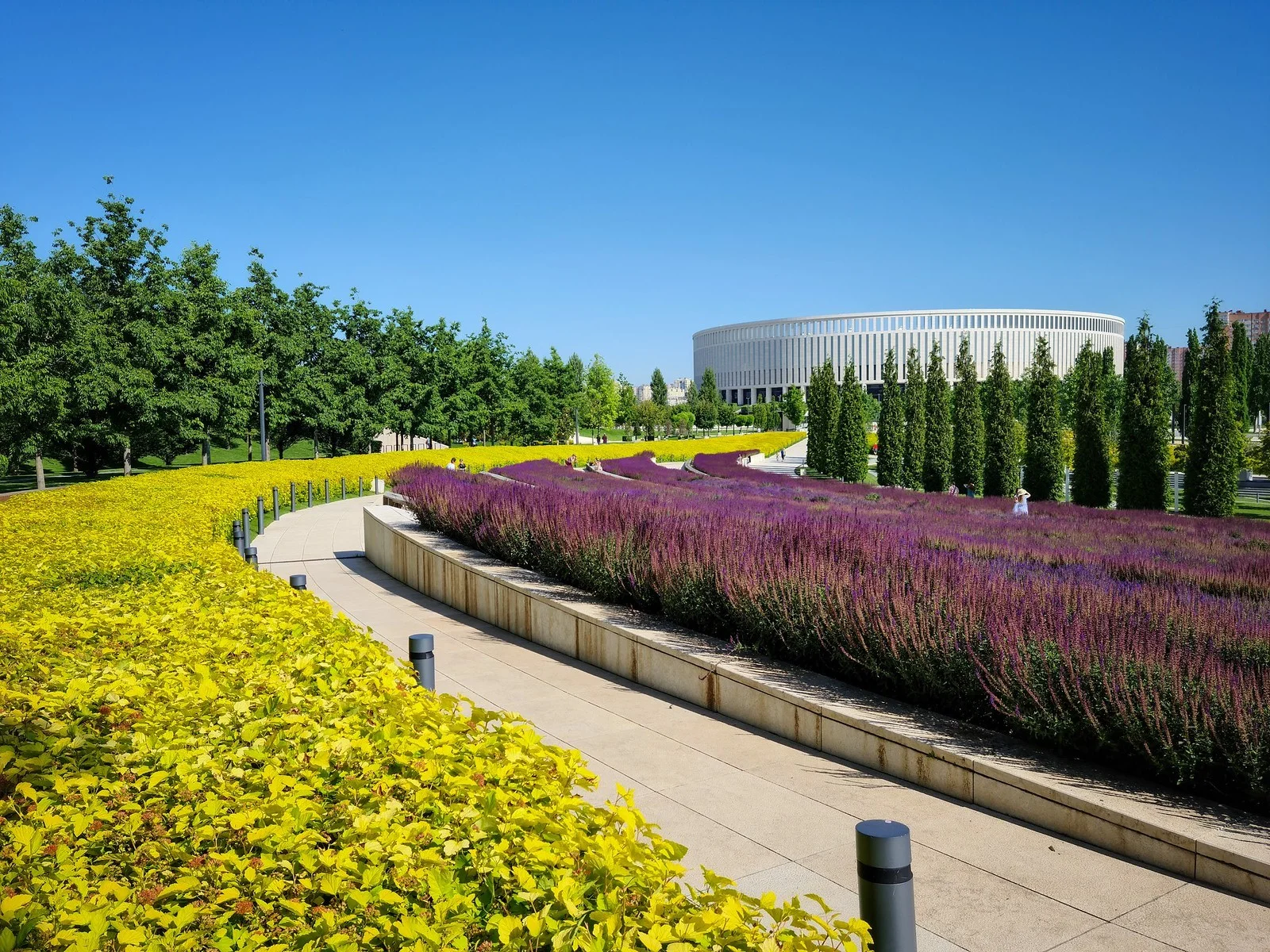
Source of photo: wikiway.com
Murmansk, Murmansk Region
From the southern warmth, we now move to the Arctic — to the world’s largest city beyond the Arctic Circle, Murmansk. It stands on the shore of the Kola Bay of the Barents Sea, just 30 kilometers from the open waters of the Arctic Ocean. Norway and Finland are located only 100–180 kilometers away, while Moscow is nearly 2000 kilometers to the south.
The city’s terrain is tiered — part lies in a lowland, while other areas are spread across various elevations of surrounding hills. Murmansk’s climate is not as harsh as one might expect for the Arctic. Winter lasts from November to April, with average temperatures around —10 to —15 °C. Summers are short and cool, with temperatures between +10 and +15 °C.
The region experiences polar day and night cycles. The polar day begins in late May and lasts until late July, during which the sun does not set. As the polar night approaches, the sky darkens slightly, but there is no formal sunset. The polar night spans from December to January.
What Drives Murmansk’s Economy?
Murmansk is a major port and fishing hub, with cod, flounder, and crab among its key catches. Industry also plays a significant role, including apatite and nickel extraction, and shipbuilding. Tourism is gaining popularity as visitors flock to witness the northern lights, hike in the tundra and hills, and enjoy the coastal scenery. It also serves as a gateway to the remote corners of the Kola Peninsula.
What is Life Like in Murmansk?
According to Rosstat, the average gross monthly salary in 2023 was around 87,000 rubles (about 75,000–80,000 rubles after tax), plus northern bonuses. As in Magadan, the cost of living is elevated due to the high price of imported goods and food.
Murmansk’s housing market is modest but stable. As of early 2025, the average price per square meter is about 100,000–120,000 rubles in new developments and 80,000–90,000 rubles on the secondary market. There are few new buildings, so most of the housing stock consists of older properties.
Real estate investment may become more attractive due to overheated markets in nearby hotspots like Kirovsk. Another important factor is the growth of northern tourism, such as trips to Teriberka, where a single night’s stay can cost from 30,000 to 80,000 rubles.
Murmansk’s population is slowly declining, and the lack of sunlight negatively affects residents’ health. However, local authorities try to mitigate this by providing free vitamins upon medical prescription. Locals also benefit from extended 50-day vacation periods and access to subsidized spa treatments — though doctors often recommend destinations with more sun.

Kazan, Republic of Tatarstan
Tatarstan is a federal subject of Russia, and its capital, Kazan, is located in the heart of the country’s European part, along the banks of the Volga River. Just 800 kilometers east of Moscow, Kazan is recognized as a cultural and sports capital, often referred to as Russia’s “third capital.”
Kazan has a moderate continental climate with well-defined seasons. Winters are cold, though becoming milder with climate change, with average temperatures around —5 to —10 °C. Summers are warm, typically around +25 °C, though occasional heat waves push temperatures above +30 °C.
What Drives Kazan’s Economy?
Kazan is a major industrial and oil-processing center. Revenues from the oil sector support the development of the local IT industry and special economic zones such as Alabuga. Tourists are drawn to Kazan’s many historic and architectural landmarks, including the Kazan Kremlin, the Kul Sharif Mosque, and the Suyumbike Tower — just a small part of the city’s rich history. The local cuisine, featuring chak-chak, uchpochmack, and grilled horse meat, is also popular among culinary tourists.
What is Life Like in Kazan?
The average gross monthly salary is about 90,000 rubles. Food prices are around the national average. Kazan’s housing market is highly active. In new developments, prices range from 200,000 to 240,000 rubles per square meter; on the secondary market — 160,000 to 180,000 rubles. The city has many new buildings, which are in high demand among students, families, and investors.
Kazan is often seen as a city of opportunity, without the typical downsides of Moscow, such as overcrowding. Local universities train young professionals in modern fields, providing them with a strong start in life. Residents appreciate the city’s balance of job opportunities and vibrant cultural life, which supports steady population growth.

Source of photo: wikiway.com
Petropavlovsk-Kamchatsky, Kamchatka Krai
From the European part of Russia, we now move to its far eastern edge — Kamchatka. The capital of Kamchatka Krai, Petropavlovsk-Kamchatsky, is located on Avacha Bay, just 10 kilometers from the Pacific Ocean. The landscape is volcanic, and the city is surrounded by volcanoes:
- Koryaksky. An active volcano 35 km from the city, last erupted in 2008.
- Avachinsky. A frequently active volcano 24 km away, with 55 eruptions recorded since 2001.
- Kozelsky. An extinct and partially eroded volcano on the slope of Avacha Hill.
In total, the Kamchatka Peninsula has over 30 active volcanoes of various types and strengths, and about 300 extinct or dormant ones.
Petropavlovsk-Kamchatsky is 6700 kilometers from Moscow; the nearest major city is Khabarovsk, 1700 kilometers away. The city is built on a slope and descends from the hills down to the coastal plain.
The climate is relatively mild, with winter temperatures around —7 to —10 °C. The main challenge is strong winds blowing from the Pacific Ocean. Summers are cool, rarely exceeding +17 °C.
What Drives the City’s Economy?
Petropavlovsk-Kamchatsky’s economy relies heavily on fishing, supplying caviar, fish, and crabs both domestically and internationally. Mining is also important due to the abundance of valuable minerals released by volcanic activity.
Despite its remoteness from European Russia, tourism is growing. Hiking on active volcanoes, tours of the Valley of Geysers, and visits to hot springs are especially popular.
What is Life Like in Petropavlovsk-Kamchatsky?
The average salary ranges from 90,000 to 120,000 rubles, with additional Far Eastern bonuses. However, as in other remote cities, the cost of living is higher, with groceries priced 30–50% above central Russia.
The housing market is tight. Prices range from 150,000 to 220,000 rubles per square meter in new buildings and 120,000 to 145,000 on the secondary market. New development is limited by geography and land availability. While subsidized mortgages previously drove high demand, interest has cooled slightly but still exceeds supply.
This city appeals to those who value nature and tranquility despite the challenges. For investors, proximity to Japan and China — closer than Moscow — and growing domestic tourism make Kamchatka an increasingly interesting option.
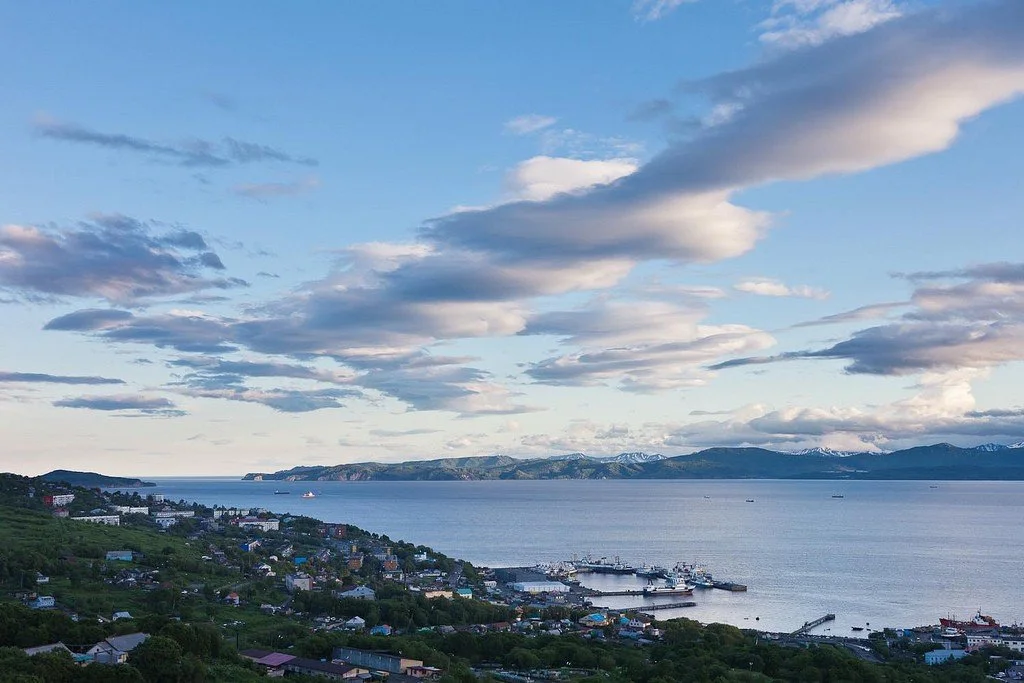
Source of photo: wikiway.com
Yekaterinburg, Sverdlovsk Region
Yekaterinburg lies at the heart of Russia. At one point, it was even considered as a potential new capital of the country, though this plan never materialized. Today, it is the capital of Sverdlovsk Region and the unofficial capital of the Ural region.
The city sits along the Iset River in a lowland area of the Ural Mountains at an altitude of up to 410 meters — a terrain known as hilly-plain. The climate is continental, with sharp seasonal changes. Winters are harsh, lasting from December to March, with average temperatures of —12 to —15 °C and cold snaps reaching —30 °C. Summers are warm and humid, around +20 to +25 °C, often with thunderstorms and rain.
What Drives Yekaterinburg’s Economy?
The city is industrially developed, with key sectors in metallurgy, machinery, and mineral extraction and processing. Industrial tourism (e. g., at Uralmash) and cultural tourism (theaters, museums, the Church on the Blood commemorating the Romanovs) are also significant.
What is Life Like in Yekaterinburg?
The average salary is around 75,000 to 90,000 rubles. Food prices are average for Russia. The city has strong infrastructure, including a metro system, though traffic congestion — especially downtown — remains a persistent issue.
The real estate market is large and active, without signs of overheating. New developments are plentiful due to high demand from families, students, and investors. Prices per square meter in new buildings range from 140,000 to 170,000 rubles; on the secondary market, 110,000 to 130,000.
Residents say Yekaterinburg feels like a capital — just without the overwhelming crowds (though the traffic is just as bad). Local IT development programs are attracting more young professionals, though this hasn’t stopped population outflow entirely.
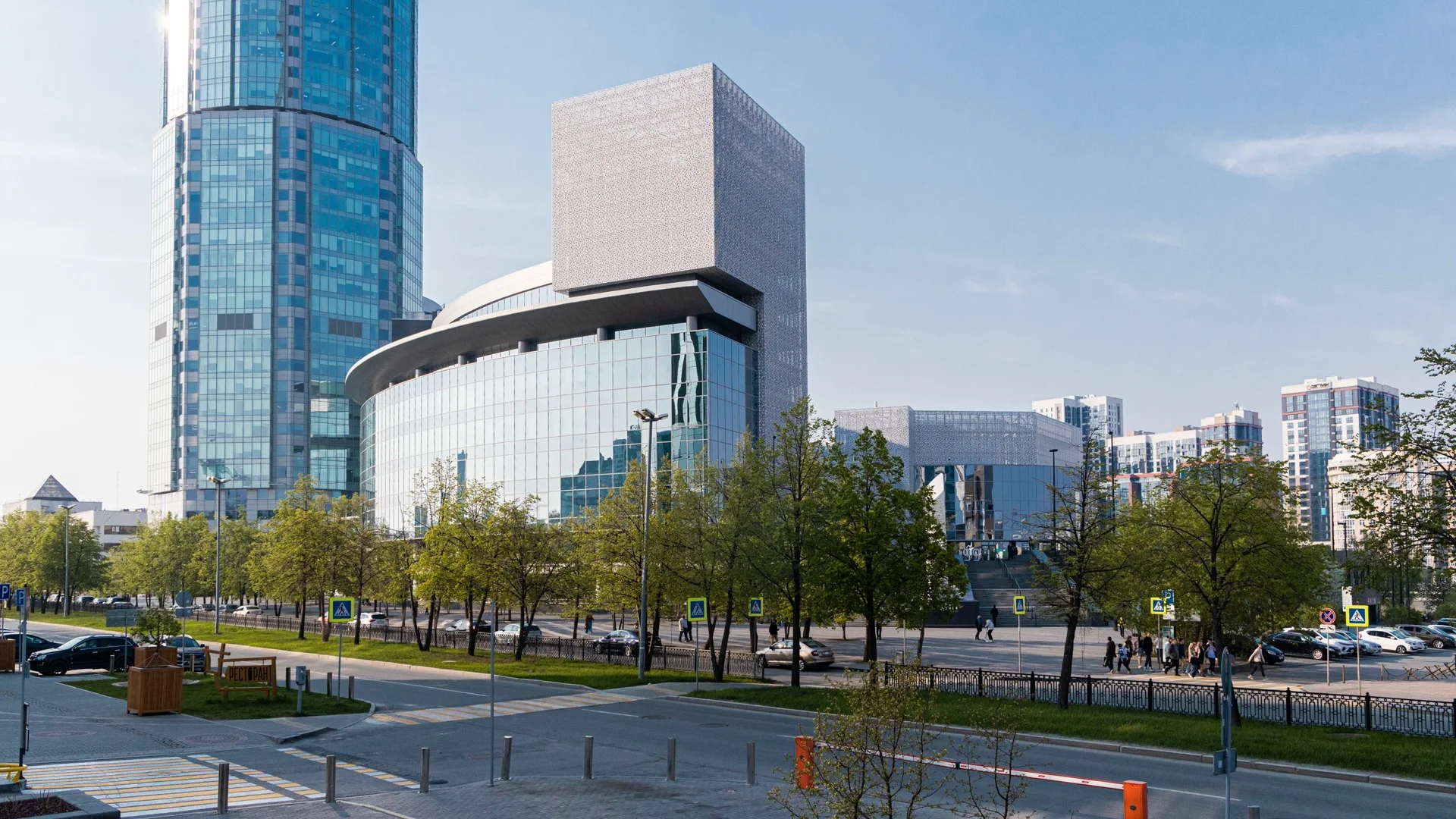
Source of photo: wikiway.com
Kaliningrad, Kaliningrad Region
From the heart of Russia, we move to its westernmost point — Kaliningrad. This enclave city is separated from the rest of the country by the territories of Poland and Lithuania. Formerly part of East Prussia, the entire Kaliningrad Region still features German-style architecture and a distinct Western European atmosphere.
Kaliningrad has a mild, maritime climate influenced by the Atlantic Ocean. Winters are short and damp, with temperatures rarely dropping below —5 °C, though cold winds from the Baltic Sea make it feel colder. These same winds moderate summer temperatures to a mild +18 to +22 °C. The Baltic Sea remains cold year-round, rarely exceeding 20 °C even in summer, and its cool air masses keep coastal cities refreshingly temperate.
What Drives Kaliningrad’s Economy?
Fishing is the backbone of Kaliningrad’s economy, supplying seafood to the European part of Russia. The second key industry is amber mining and processing — the region holds up to 90% of the world’s amber reserves. Other important sectors include machinery manufacturing and food production, particularly seafood processing.
Tourism plays an important but secondary role. The region’s rich history has left many architectural landmarks, such as the Königsberg Cathedral, forts, and castles. However, the small size of the region and the cold sea limit tourism growth.
What is Life Like in Kaliningrad?
The average salary in the city ranges from 60,000 to 80,000 rubles. The infrastructure is well developed, with shopping malls, theaters, and restaurants specializing in European cuisine and seafood. However, its geographic isolation complicates logistics — air tickets to Moscow or St. Petersburg are 10–15% more expensive than those from cities at a similar distance.
Despite the region’s small size, the housing market is actively expanding. Average prices are 110,000–140,000 rubles per square meter in new buildings and 90,000–120,000 on the secondary market. Demand is fueled both by locals and newcomers from other regions who view Kaliningrad as “European Russia.” Coastal suburbs like Svetlogorsk and Zelenogradsk are particularly popular, though property prices there are higher. The region is attractive for real estate investors, especially for short-term rentals to tourists.
Life in Kaliningrad is calm and laid-back, with none of the big-city rush. In just a couple of hours, you can reach the (cold) sea. The only downsides are the sense of detachment from the mainland and dependence on the often moody Baltic weather.
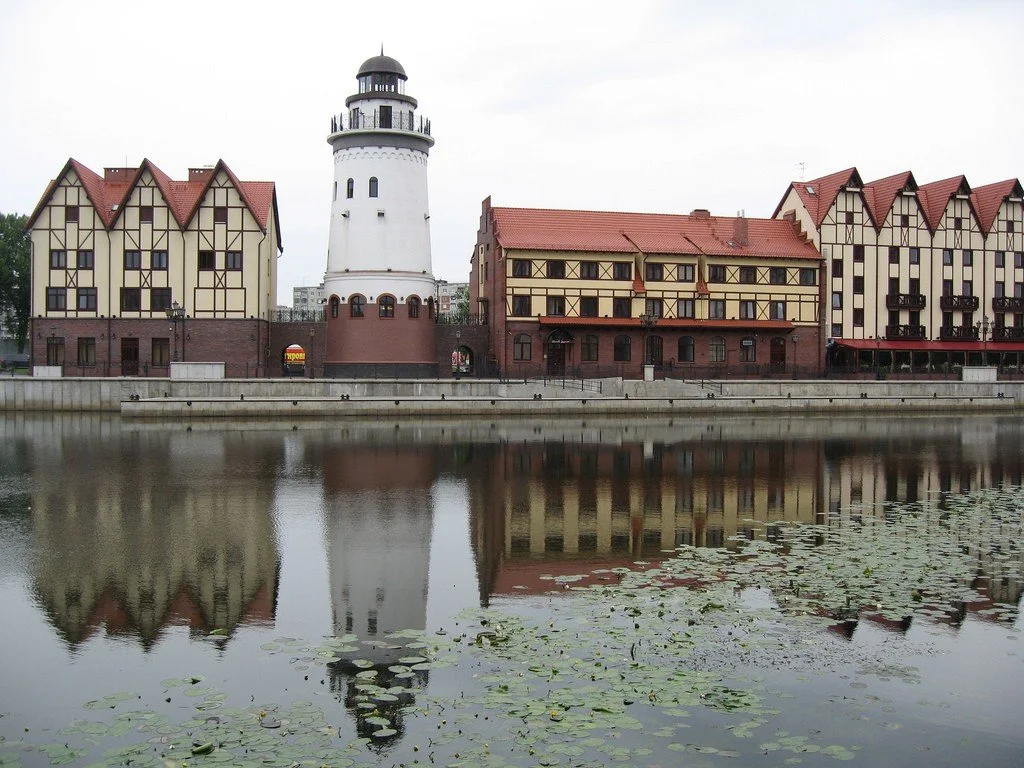
Source of photo: wikiway.com
Petrozavodsk, Republic of Karelia
Located just 400 kilometers from St. Petersburg and less than 1000 from Moscow, Petrozavodsk is the capital of the Republic of Karelia. The city lies on the shore of Lake Onega — just one of approximately 73,000 water bodies and over 28,000 natural lakes in the region. Karelia’s terrain is rugged and cave-filled, providing a stark contrast to most other cities on this list.
The climate in Petrozavodsk is moderately continental with maritime features. Winters are long (November to March), averaging —8 to —12 °C, though the high humidity makes it feel colder than in other parts of European Russia. Summers are short and cool, between +15 and +20 °C, with frequent rainfall. Proximity to Lake Onega helps stabilize temperature swings but also brings strong winds and thick fog.
What Drives Petrozavodsk’s Economy?
The local economy is based on machine-building and wood-processing industries. The region’s lakes are rich in salmon, whitefish, and pike-perch, which are supplied both domestically and for export.
Tourism is another important sector. The “Sortavala” highway — considered Russia’s most scenic road — passes through the region, winding between giant stone cliffs and endless lakes. However, tourist infrastructure is underdeveloped, so Karelia mostly appeals to those who enjoy nature and don’t mind “roughing it.”
What is Life Like in Petrozavodsk?
The average salary is about 60,000–75,000 rubles — lower than in major cities, though supplemented by northern bonuses. Food prices are moderate, though local soil is unsuitable for large-scale fruit and vegetable farming. This is offset by the abundance of fish from nearby lakes and aquaculture farms.
The housing market is calm but stable. New builds cost 90,000–120,000 rubles per square meter, and secondary housing is priced at 70,000–100,000. New developments are limited by low demand, underground water, caves, and rocky terrain — construction often requires digging into stone. Investors tend to focus on secondary housing for rental income, as resale liquidity is low.
The city offers clean air and abundant freshwater — though this doesn’t always guarantee quality. Nature is vibrant and unique, but long winters and a lack of sunlight can dampen spirits. Many young people move to St. Petersburg for better opportunities.
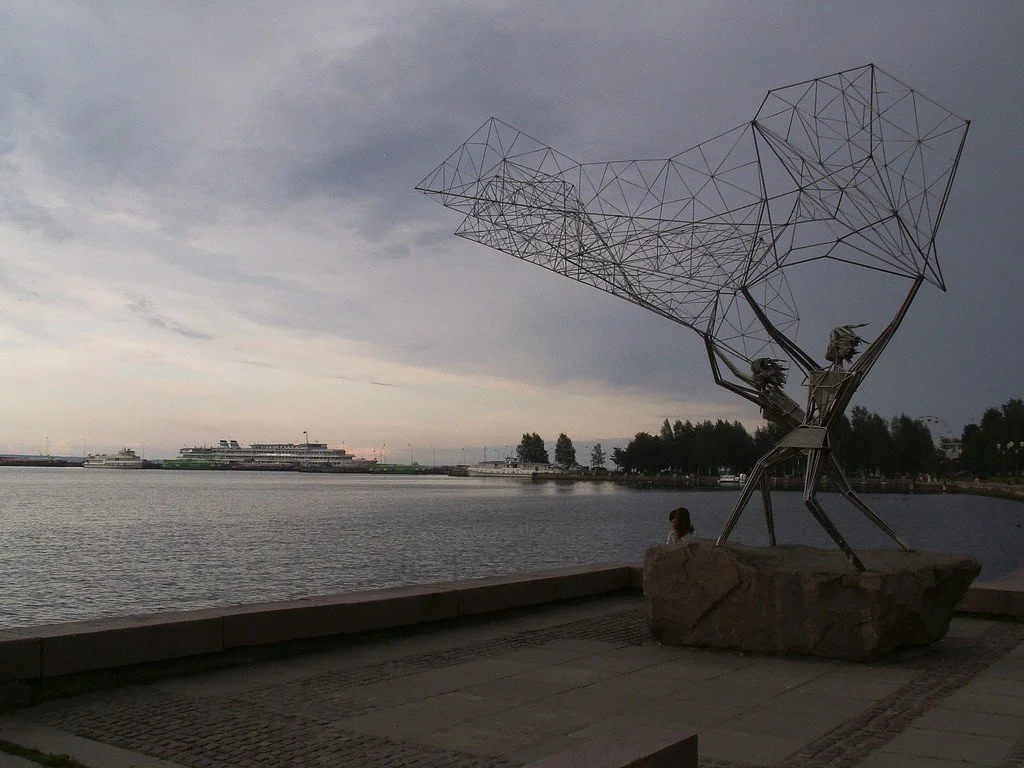
Source of photo: wikiway.com
Volgograd, Volgograd Region
Located on the banks of the mighty Volga River, Volgograd is a city of military glory and Soviet resilience. Though it has shed its symbolic name of Stalingrad, its legacy from World War II remains strong — most notably through the iconic “Motherland Calls” statue atop Mamayev Kurgan.
Volgograd has a continental climate with hot summers and cold winters. Summers are dry and scorching, often reaching +30 to +35 °C and occasionally exceeding +40 °C. Winters are short but cold, averaging —8 to —12 °C, with winds sweeping across the steppe. Spring and autumn are brief and relatively dry.
What Drives Volgograd’s Economy?
The city’s economy relies on heavy and chemical industries, especially metallurgy and machinery. Despite the proximity to the Volga River, fishing and seafood processing are not significant. Instead, the river is crucial for agriculture, providing fresh water to the fertile steppe lands. Tourists mainly visit for historical reasons.
What is Life Like in Volgograd?
The average salary is around 55,000–85,000 rubles. Local agricultural production helps keep food prices low, particularly in-season. However, the heat and dust storms can be difficult to live with.
The housing market is stable, with prices ranging from 80,000 to 140,000 rubles per square meter in new buildings and 60,000 to 110,000 on the secondary market. New residential complexes are actively being built. The city is appealing to investors as a major regional center with affordable real estate — despite its challenging climate.
Locals are proud of their city’s history, enjoy the open space and proximity to nature, but the extreme summer heat, dust, and remoteness from major cities can make them consider relocating to more temperate regions.
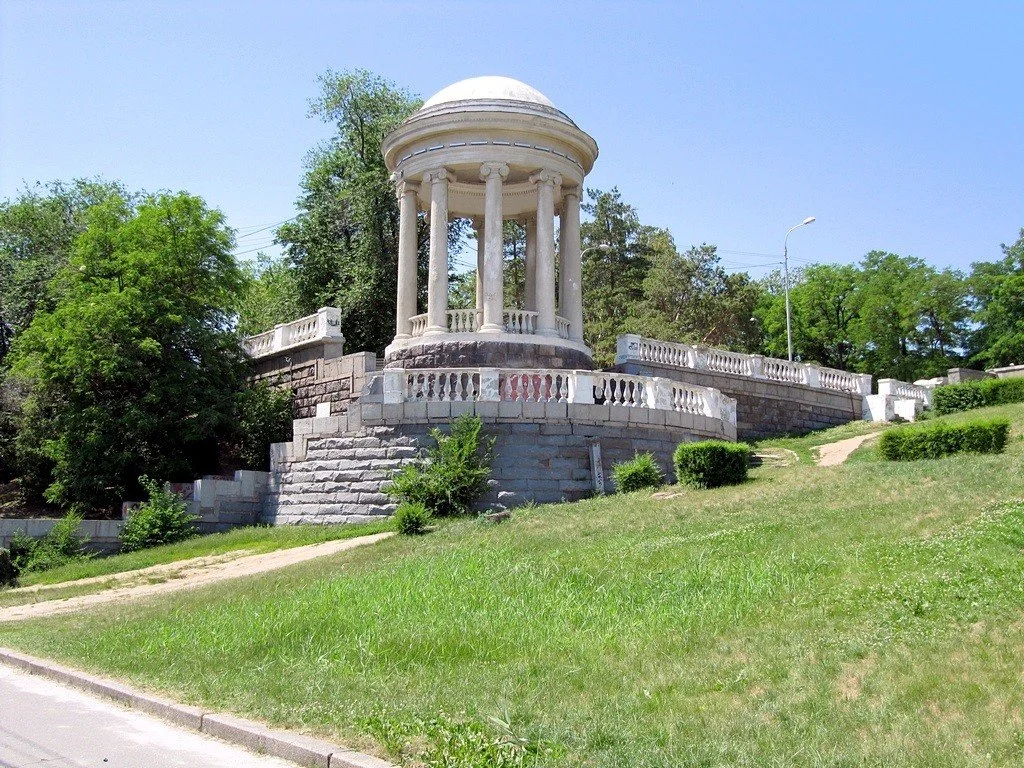
Source of photo: wikiway.com
Irkutsk, Irkutsk Region
Irkutsk rightly earns its place on this list. It’s considered the unofficial capital of Eastern Siberia and lies just 60 kilometers from Lake Baikal — the world’s largest freshwater lake by surface area. Irkutsk is almost equidistant from Russia’s eastern and western edges: over 5000 kilometers from Moscow and about 4000 from Vladivostok.
The sharply continental climate means wide temperature fluctuations. Winters are long and severe (November to March), averaging —15 to —20 °C, with regular cold spells below —40 °C. Summers are warm but short, with temperatures around +20 to +25 °C, accompanied by rain and high humidity from the Angara River and nearby Lake Baikal.
What Drives Irkutsk’s Economy?
The local economy is powered by gold, coal, and oil extraction, as well as machine-building and energy production (notably the Irkutsk Hydroelectric Station). Tourism is an increasingly important sector. Since 2024, tourist inflow from China has declined, prompting regional efforts to promote domestic tourism centered around Lake Baikal.
Baikal straddles both the Irkutsk Region and the Republic of Buryatia. While both sides are accessible, Irkutsk imposes stricter environmental regulations due to the lake’s pollution issues. Buryatia has more relaxed rules, making visits easier but environmentally damaging.
What is Life Like in Irkutsk?
Average salaries range from 75,000 to 95,000 rubles. Food prices are moderate, with local markets offering Baikal fish (omul, grayling) and forest products. The city has theaters, museums, and shopping centers, while maintaining a cozy provincial feel.
Housing prices range from 120,000 to 160,000 rubles per square meter in new builds and 90,000 to 140,000 on the secondary market. Irkutsk attracts investors thanks to its proximity to Baikal: demand for rental properties is steadily growing, and increased tourist traffic promises rising rental rates.
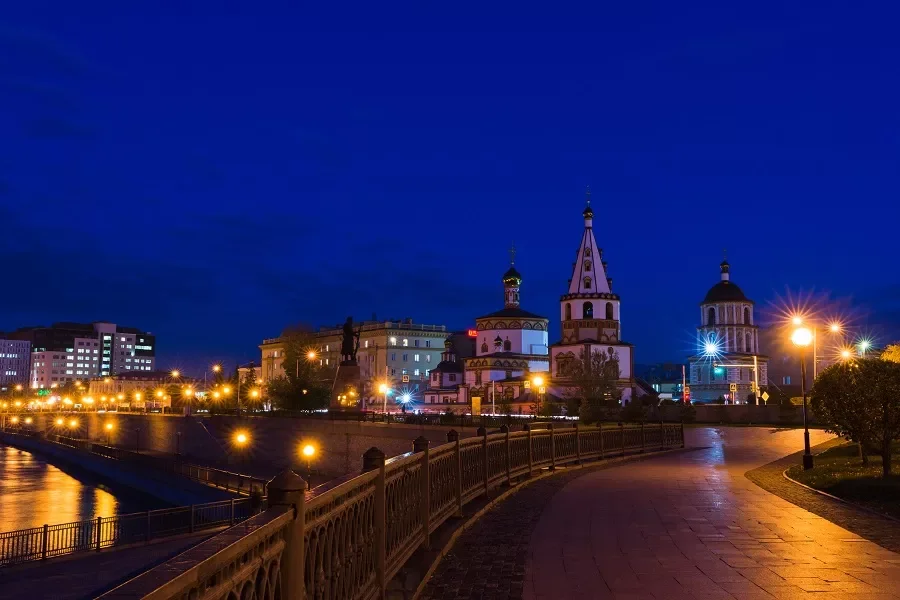
Source of photo: www.tutu.ru
In Summary
The Russian Federation is indeed a vast country, and each of its cities offers something unique. We’ve deliberately left out Moscow and St. Petersburg, as they dominate headlines and often overshadow truly distinctive places like Petrozavodsk or Irkutsk.
We can’t cover every fascinating city — like Norilsk, located 30 kilometers from the Putorana Plateau, a unique mountain range without peaks, or towns near the South Ural State Nature Reserve, home to some of the highest points in the Southern Urals. Still, even these ten cities show just how diverse Russia is — from frigid northern landscapes to scorching steppes, from volcanoes to lakes.
Author
I write informative articles about real estate, investments, job opportunities, taxes, etc.












